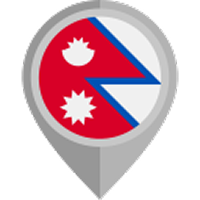Nepal vision | 23/12/2024
You are on the way through the diverse landscape of nature, passing through the lap of the towering Himalayas to get the rewards of the natural wonders and cultural gems, along with the cheering smile and beauty of the majestic white peak. It is the true way to explain the beauty of trekking in Nepal. To make your trekking adventure even more fun with proper guidance.
That is where the local guide comes into the picture. Trekking in Nepal with a local guide brings in unmatched expertise, cultural insights, and a personal touch to make your trek a truly enriching experience. Aside from that, the local guides come from the remote regions of Nepal, mainly the places with some famous trekking trails wrapped in them. They have the experience and deeper knowledge of the trail.
Local guides are your friends when embarking on the trek. So let us help you understand everything regarding the local guides so you can have the best experience on the trek.
Can you trek without a guide in Nepal?
Previously, trekking without a guide was possible in Nepal on the shorter routes. However, the rules have become stricter; as of April 1, 2023, the Nepal Tourism Board requires all foreign trekkers to hire a licensed guide.
The rule was made compulsory to improve safety and decrease the risk of accidents in remote retail. Besides, the mandatory hiring of local guides will support the region's economy.
Aside from restricted trekking regions like the Manaslu Circuit Trek, Tsum Valley Trek, and many more, hiring a guide is now mandatory for other places like the Everest Base Camp Trek, Annapurna Circuit Trek, Langtang Trek, and Gokyo Trek.
Role of Guide in Trekking in Nepal
Nepal is a small country that lies in the lap of towering peaks and hilly regions. Understanding its geography, we can assure you that you will be walking on uneven land surfaces in the heat of the remote area. At the same time, this adventure is a once-in-a-lifetime opportunity. But to make your journey better, your guide plays an important role. Your guide is your friend responsible for ensuring you have a safe and enjoyable experience in the Himalayas.
Guides are more than just navigators. They have the expertise to navigate the mountainous trail and cultural liaisons throughout the trek. Similarly, their responsibilities start with the initial meticulous planning, from selecting an appropriate route according to your fitness level to securing the necessary permits and managing logistics for your adventure.
These organizational aids help you focus on the adventure without the stress of logistical challenges. Moreover, safety is yet another concern when trekking. The expertise and trained guides can handle emergencies and address unexpected situations effectively. Furthermore, they provide enriching experiences by sharing insights about the culture and history of the local people.
The most important role of the guide is the comfort they contribute to your trekking journey. They ensure all the required things, including accommodating dietary preferences and providing entertainment during evening gatherings.

Benefits of Hiring a Local Guide for Trek in Nepal
Getting help from your local guide has numerous advantages that can improve your trekking experience. Some of the benefits of the local guide are below:
Local Expertise
Local guides have detailed knowledge of the trekking routes. Likewise, showing some of the hidden trails and shortcuts that are not well-marked on maps.
They are familiar with the terrain, weather patterns, and potential hazards. This information will be essential for deciding the best paths to take based on current conditions. Their expertise will help you avoid dangerous situations like landslides or blocked paths, ensuring a smoother journey.
Environmental Awareness
Local guides are pillars of responsible trekking practices. They educate trekkers about environmental conservation and cultural etiquette. They strictly follow the "Leave No Trace" principles to reduce the ecological impact of trekking activities. This awareness contributes to sustainable tourism practices that benefit both the environment and local communities.

Support for Local Economies
When you hire local guides, you contribute directly to the local economy. The income generated from guiding services is a major source of support for families in remote areas. These incomes also support the development of the local regions.
Navigation Skills
Guides are skilled navigators who can adeptly use both traditional wayfinding techniques and modern navigation tools, such as GPS devices. Their ability to navigate complex trails helps prevent lost time and frustration for trekkers who may be unfamiliar with the terrain.
Tips for Choosing a Local Guide
While guides are the partners for trekking, there are different things you should consider before trekking because a bad guide can be enough to ruin your trekking experience.
So, our team has devised ways for you to find the best guide for your trek.
- You should look for expert trekking companies by researching and looking for their review on Google. Like Nepal Vision Trek, which has hundreds of positive reviews on Google, signifying their quality of work.
- Look for the training and license of the guide from the Trekking Agencies Association of Nepal (TAAN) or the Nepal Mountaineering Association (NMA). Likewise, also ask for their training in first aid to help you with first aid in the trek.
- Be honest and ask about their experience and find out if they have led the route and if they have knowledge of local customs.
- You can take the time to interview at least two or three guides and compare their personalities and behaviors.
- Similarly, review their planned itinerary, acclimatization strategies, and safety measures.
- Also, be open to discussing all the related costs upfront and agree on responsibilities to avoid surprises.
- Before you trek, first have a face-to-face meeting or video call to gauge their personality and professionalism.
- Choose a guide who makes you feel confident, comfortable, and excited about your trek.
Local Guides From Nepal Vision Trek
Nepal Vision Trek's guides are among the top in the trekking field. Their safe and enriching expertise ensures that our clients have a seamless trekking experience.
Our guides, Pemba Sherpa, Jangchub Dorji Sherpa, Santosh Wagle, Om Prakash Lamichhane, and Krishna, are licensed by recognized organizations like TAAN or NMA. They are the backbone of our 30 years of experience.

In addition to their years of experience and expertise in the field, their training in first aid makes them stand out.
To wrap up, the trek journey in Nepal is the adventure of a lifetime. To make your adventure even more memorable comes the expertise of a local guide. Going for a local guide gives you a safe and enjoyable experience throughout the trek. If you want to use the knowledge and professionalism of a guide for your trekking adventure, feel free to reach the Nepal Vision Trek to help you with everything for an unforgettable Himalayas exploration.
FAQS









